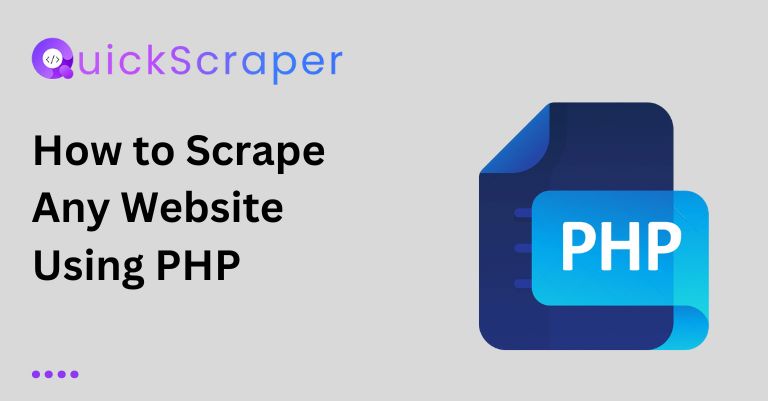
How to Scrape Any Website Using PHP
How to Scrape Any Website Using PHP Do you hate manually copying and pasting data from websites? With web scraping, you can automate the
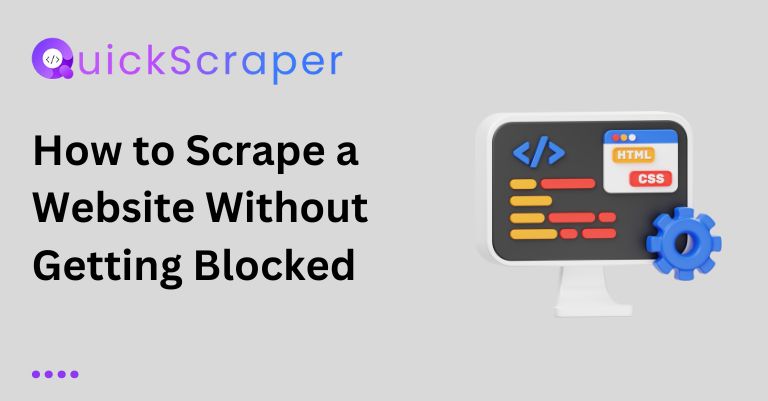
Web scraping, as a powerful tool, is beneficial for developers, giving them the power to obtain useful data from websites for different objectives. Though websites may have safeguards to stop automated crawling that can swamp their servers or steal data. Getting blocked while scraping is usually disappointing because it interrupts your project. This guide walks you through the basics of how to scrape websites successfully without getting blocked.
Imagine a busy street corner. Everyone has a unique address (IP address) that identifies them. When you scrape a website repeatedly from the same IP, it’s like standing on that corner making constant requests. The website owner might notice this unusual activity and suspect a scraper.
Proxies act as intermediaries between your computer and the target website. They have their own IP addresses, making it appear as if different users are making scraping requests. Here’s how proxies help you avoid detection:
Remember: Using free proxies can be risky. They might be unreliable, slow, or even inject malicious code into your requests. Consider investing in a reputable proxy service for a smooth and secure scraping experience.
While traditional web scraping tools directly interact with website code, headless browsers offer a more sophisticated approach. These are essentially browsers without a graphical user interface (GUI). They can render web pages like a normal browser, allowing you to navigate, interact with forms, and execute JavaScript code.
Here’s why headless browsers are beneficial for scraping:
Although headless browsers offer greater scraping flexibility, they can be more complex to set up and require programming knowledge.
When you visit a website, your browser transmits various details about your system configuration, like fonts, plugins, screen resolution, and even time zone settings. This information creates a unique “fingerprint” that can be used to identify your device. Websites can use browser fingerprinting to distinguish real users from automated bots.
Here’s how to avoid being identified by your browser fingerprint:
Remember, browser fingerprinting is constantly evolving, so staying updated on the latest techniques is crucial.
Traditional scraping techniques primarily focused on IP addresses. However, websites are increasingly using TLS fingerprinting as an additional layer of security. TLS (Transport Layer Security) is the encryption protocol used for secure communication between your browser and the website. During this handshake, your system exchanges details about its TLS capabilities, creating a unique fingerprint.
Here’s how to mitigate detection through TLS fingerprinting:
By combining these techniques with the previous methods, you can significantly reduce the risk of being blocked based on your digital fingerprint.
Imagine walking into a store without saying hello or looking around. The staff might find your behavior suspicious. Similarly, websites analyze request headers, which are essentially messages sent with your scraping requests. These headers include information like the browser type, operating system, and referrer (the website that linked you).
Here’s how to craft realistic request headers for scraping:
Remember: Don’t blindly copy user-agent strings from real browsers. Websites can detect outdated or spoofed user-agents easily. Regularly update your user-agent strings to reflect current versions.
CAPTCHAs (Completely Automated Public Turing test to tell Computers and Humans Apart) are challenges designed to distinguish humans from automated bots. They often involve identifying distorted text, selecting images, or solving puzzles. While CAPTCHAs can be a nuisance, there are ways to automate them:
Use CAPTCHA solving services responsibly! Excessive or abusive use of these services can put additional strain on the website and potentially violate their terms of service. Consider solving CAPTCHAs manually if you encounter them occasionally.
Websites often cater to specific geographic regions. If you’re scraping a location-specific website from a different continent, it might raise red flags. Here’s why location matters:
Be mindful of scraping limits! Websites might have scraping limitations in place to prevent overloading their servers. Scrape data responsibly and spread your requests over time to avoid triggering these limits.
While proxies offer a good layer of protection, some advanced scraping scenarios might require complete IP address masking. Here are some advanced techniques (use with caution):
These methods should only be used by experienced developers who understand the legal and ethical implications. Using anonymized networks for malicious scraping activities is illegal.
All above scraping techniques can be tiresome if you try to manually scrape a website and still have chance of getting blocked. A quick and faster solution to this problem is to use QuickScraper. QuickScraper is a comprehensive web scraping tool designed to simplify the process for developers.
Here’s how QuickScraper empowers you to scrape effectively:
Before we begin, ensure you have the following prerequisites installed:
requests librarybeautifulsoup4 libraryYou can install the required libraries using pip:
pip install requests beautifulsoup4
Create a new Python file (e.g., amazon_scraper.py) and copy the following code into it:
import requests
from bs4 import BeautifulSoup
import json
access_token = 'YOUR_ACCESS_TOKEN' #Replace with your Quick Scraper access token
url = f"https://api.quickscraper.co/parse?access_token={access_token}&url=https://www.amazon.com/s?k=laptop"
response = requests.get(url) #to bypass captcha use our quickscraper api
soup = BeautifulSoup(response.text, 'html.parser')
productItems = soup.find_all('div', class_=['s-result-item','s-asin'])
products = []
for product in productItems:
title = product.find('span', class_=['a-size-medium']).text.strip() if product.find('span', class_=['a-size-medium']) else None
price = product.find('span', class_=['a-price']).text.strip() if product.find('span', class_=['a-price']) else None
img = product.find('img', {'class': 's-image'})
img_url = img.get('src') if img else None
foundItem = {
"title": title,
"price": price,
"image_url": img_url,
}
products.append(foundItem)
with open("products.json", "w") as file:
json.dump(products, file, indent=4)
Replace 'YOUR_ACCESS_TOKEN' with your actual Quick Scraper access token that you received during sign up.
requests for making HTTP requests, BeautifulSoup for parsing HTML, and json for working with JSON data.access_token and the desired website URL (https://www.amazon.com/s?k=laptop in this case).response variable.BeautifulSoup.foundItem.foundItem dictionary to the products list.products list to a JSON file named products.json.Save the file and run the script using the following command:
python amazon_scraper.py
This will execute the script, scrape the Amazon search results for laptops, and save the extracted data to a JSON file named products.json in the same directory.
Open the products.json file to view the scraped data. You should see a list of dictionaries, each containing the title, price, and image URL of a laptop product from Amazon’s search results.
Get started with QuickScraper today!
Web scraping can be a powerful tool, but it’s crucial to remember that websites have the right to control access to their data. Here are some final thoughts to keep in mind:
With these guidelines and tools such as QuickScraper, you can scrape data effectively and ethically while maintaining a positive relationship with websites.

How to Scrape Any Website Using PHP Do you hate manually copying and pasting data from websites? With web scraping, you can automate the
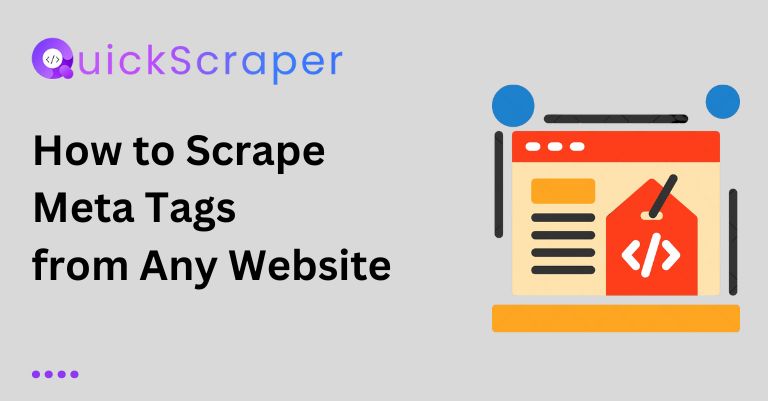
How to Scrape Meta Tags from Any Website Meta tags are snippets of text that describe a website’s content, and search engines use them to
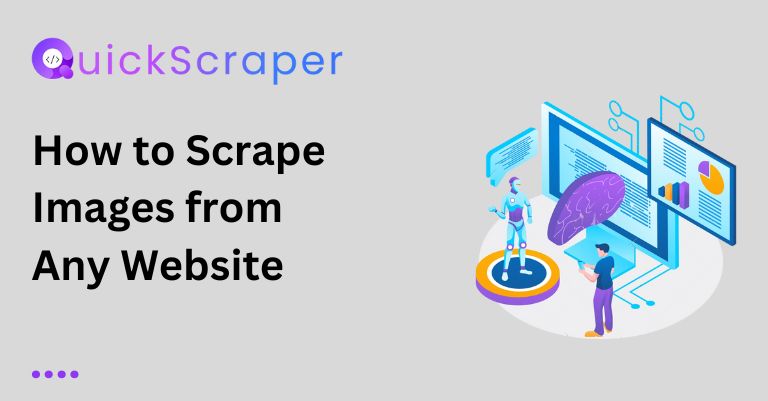
How to Scrape Images from Any Website Scraping images from websites can be a useful technique for various purposes, such as creating image datasets, backing

How to Scrape a Website Without Getting Blocked: A Developer’s Guide Web scraping, as a powerful tool, is beneficial for developers, giving them the power
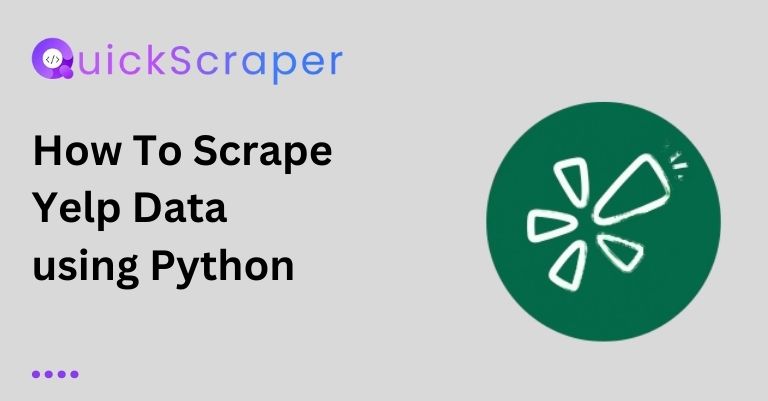
How To Scrape Yelp Data using Python Web scraping is the process of extracting data from websites automatically. In this blog post, we’ll learn

How to Scrape Stock Prices Every Day using Python In this blog post, we will learn how to scrape stock prices from a financial website
By clicking “Accept”, you agree Quickscraper can store cookies on your device and disclose information in accordance with our Cookie Policy. For more information, Contact us.